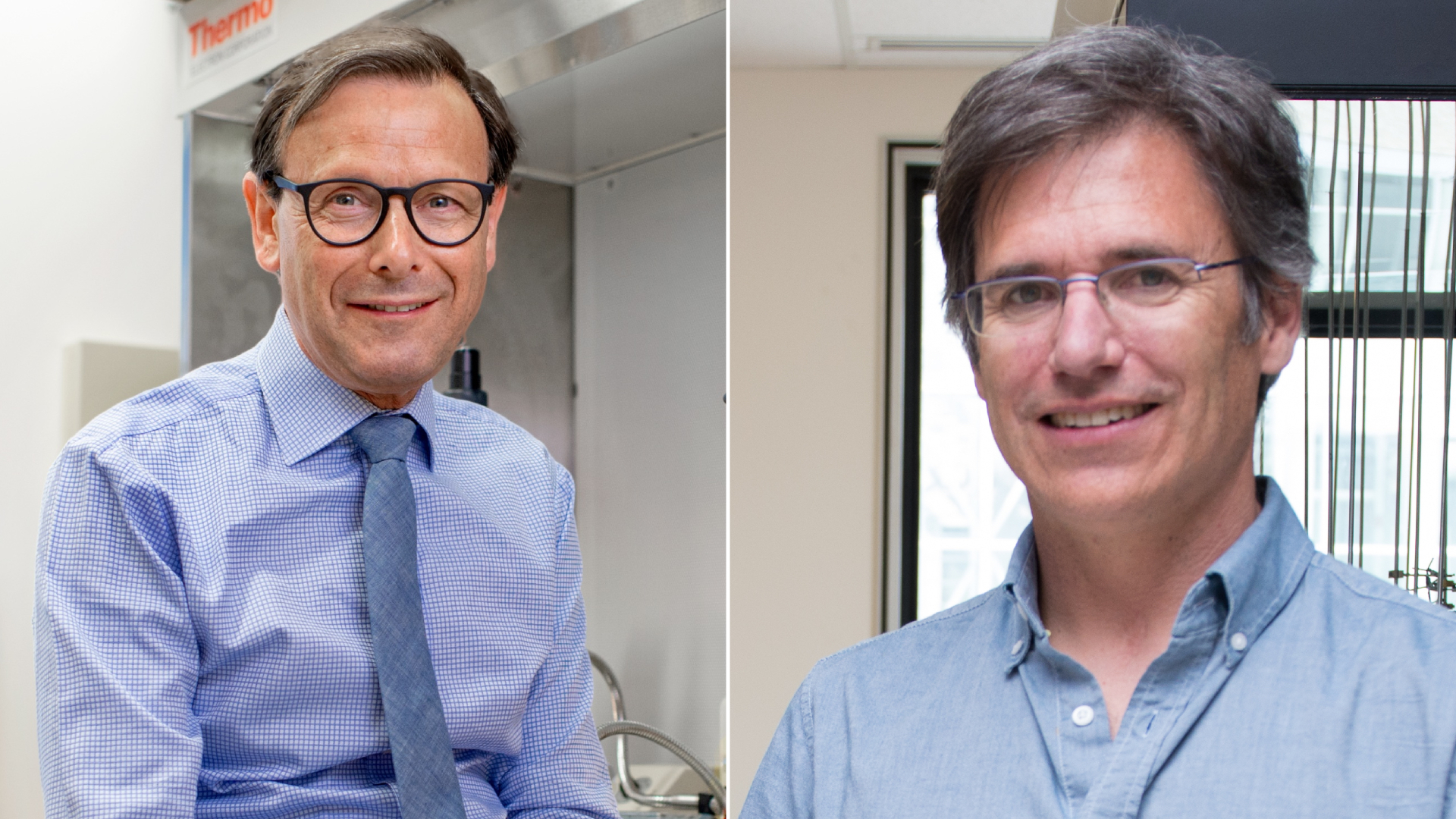Two FoMD faculty renewed as Canada Research Chairs
Ryan O'Byrne - 16 June 2021

Dr. Shapiro (l) and Dr. Glover have been renewed as Canada Research Chairs.
The Canada Research Chairs Program was created in 2000 and is part of the Government of Canada’s strategy to make Canada a world leader in research and development. Approximately $295 million per year is invested to support 2,285 CRCs across Canada, who each seek to achieve research excellence in their respective fields.
James Shapiro, professor, Department of Surgery
What did it mean to you to be renewed as the CRC of Transplantation Surgery and Regenerative Medicine?
I'm absolutely thrilled. It's a huge honour for me personally, for our Department of Surgery, the Faculty of Medicine & Dentistry and the University of Alberta.
It endorses the investment that CRC has made in our team and research program over the previous seven years, and I'm particularly excited to see the trajectory move forward, driving our game-changing therapies towards the curative treatment of all forms of diabetes.
What are some key research priorities that you plan to focus on?
Our lab is focused on development of personalized medicine-based stem cell therapies to treat diabetes. One approach we're excited about is using a patient's own stem cells to create islet cells that can be transplanted back into the patient to make insulin, avoiding the need for anti-rejection drugs and providing a potentially limitless source of cells that is no longer dependent on organ donors.
We have put together a brilliant team of around 60 top local, national and international investigators with expertise in stem cell production and mass manufacture, artificial intelligence and machine learning. This team is geared up to orchestrate their skills together with industry to transform the cell-manufacturing process.
How do you envision this work contributing to patient impacts or improved patient outcomes?
We have learned over the past 20 years with the success of the Edmonton Protocol that cell-replacement therapy can revolutionize the lives of patients with diabetes. There are 460 million people living with diabetes today that will one day benefit from this therapy. No longer needing to inject insulin, monitor blood sugar or take anti-rejection drugs will take us to the next frontier of regenerative medicine, and it is truly exciting that the U of A is at the forefront in these efforts. There is a bright future ahead for patients living with diabetes, and this CRC will help accelerate our team’s progress.
Mark Glover, professor and chair, Department of Biochemistry
What did it mean to you to be renewed as the CRC of Structural Molecular Biology?
It's fantastic. It comes at an exciting time for my lab, which is in a bit of a transition period.
Structural and molecular biology is about trying to understand how genes work at the fundamental chemical, structural and molecular level. But when you get to that level of detail, you end up looking at individual parts and not the intact systems of molecules. With this CRC, we’re trying to be more holistic in our approach.
What are some key research priorities that you plan to focus on?
We're specifically interested in looking at chromatin (the package of DNA, protein and RNA in cells) that is in the act of being damaged and repaired inside cells. We're actually creating whole chromatin systems that consist of intact DNA bound to the normal proteins. It's giving us a fundamental view into how all cells maintain the integrity of their DNA.
There are some translational things that could come out of this. For example, we now know that cancers are the result of damage to the DNA and our cells have the systems to recognize damage and repair the damage. What we're finding out is that deficiencies in these repair systems are often at the heart of many cancers.
We also want to establish a new imaging method. Everything we've done so far has used X-ray crystallography, which is fantastic for looking at smaller things, but doesn’t work very well when looking at these large complexes of DNA with so many proteins. There's a new microscopy technique called cryo-electron microscopy that we want to move into. We've got some instrumentation at the U of A and we're working on developing this area further. That's going to be a key goal for us in the next seven years.
How do you envision this work contributing to patient impacts or improved patient outcomes?
Structural molecular biology is really at the beginning of the pipeline of drug discovery. So for example, one of the applications of our work could be to eventually uncover new drugs. Specifically, the DNA repair and DNA damage signalling work we do has a lot of potential application for cancer therapy development.
Many of the common cancer therapies actually damage DNA; they're very crude therapies that target tumours with something that is especially cytotoxic to the tumours, but of course there are terrible side-effects. Our idea is that if we can reduce the DNA damage response in the tumour cell, we can reduce the side-effects and may be able to enhance the efficacy of those DNA-targeting therapies as well.